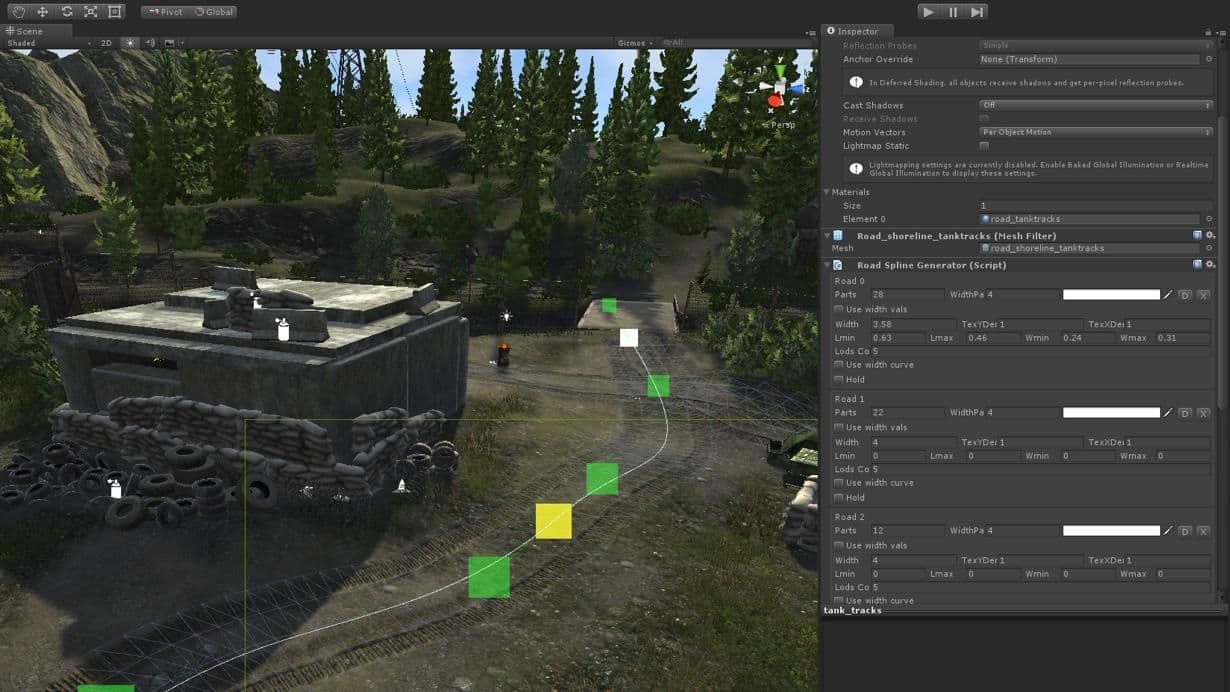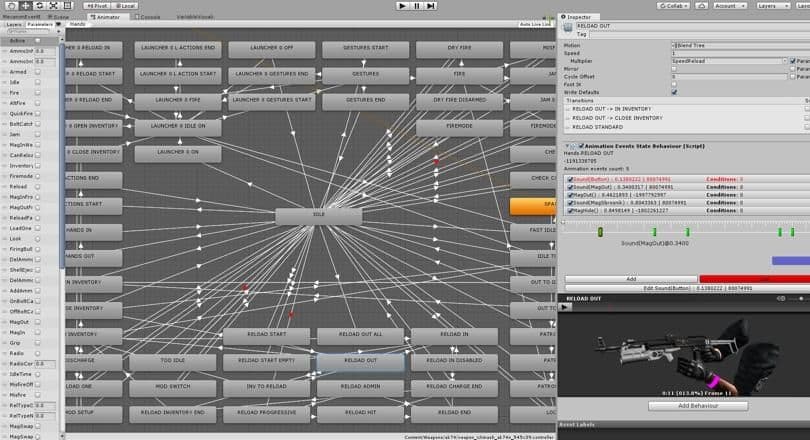
Escape from Tarkov

Laying the foundation
For the 80-person development team at St. Petersburg-based Battlestate Games, hardcore first-person shooters are a great passion. The foundational team got its start at AbsolutSoft creating the incredible fast-paced shooter Contract Wars for browsers and the now-retired Unity Web Player. The development of that game proved to be excellent ground to learn new skills and gain expertise while also building up the finances needed to evolve and found Battlestate Games, a studio focused entirely on the development of its “Russia 2028” universe of games.

Leveraging Unity knowledge
“We learned quite a bit from our experiences at AbsolutSoft. Not only did we gain critical knowledge and understanding of first-person shooters, but we also developed a deep understanding of Unity and its systems,” says COO and project lead Nikita Buyanov. “This allowed us to begin Escape from Tarkov with an amazing foundation of both design and technology, and we’re fortunate to get to focus on creating exactly the hardcore games that we love so much.”
Headlong into hardcore conflicts

Building intense gameplay
At a fundamental level, Escape from Tarkov is about tense and realistic gunplay and advancement by looting. Sporting a massive selection of guns and modifications, along with a realistic ballistics model, death in the game can come quickly and painfully. Adding to the realism, weapons need to be cared for lest they wear out and jam or overheat. Similarly, players will need to tend to their own health as bones break, wounds bleed, and exhaustion sets in. This is not a game for the timid!

Multiplayer battles
Escape from Tarkov is a story-based experience that challenges all comers to escape the city with their lives. Matches are session-based and inhabited not only by human players but AI-driven Scavs to fill the world – ensuring a constant air of danger. Players can join the conflict on their own or with a squad of friends, as multiplayer is at once both cooperative and competitive. Any loot you find in a session you get to keep, provided you make it to one of the extraction zones alive. However, if you find yourself on the losing end of a gun battle, you’ll lose everything you found and everything you brought with you.
Building the perfect battle arena

Battlestate turned to 3D terrain generator World Machine to procedurally create the perfect environment on which to stage compelling gameplay. Once the base was generated, the result was split into 35 sub-terrains and given a custom LOD system and dynamic terrain output preforms.
To handle the huge amount of detail, Battlestate used custom scripts to offload resources outside the field of view. “Basically, what we built amounts to manual occlusion culling. The normal method required a lot of CPU resources given the size of the maps and amount of detail,” continues Nik.
“We were determined from the start to create large and detailed areas, which means we need to put an extra emphasis, from the ground up, on how they’re optimized. This comes down to careful planning for how to handle issues like occlusion culling, but we also have Unity specialists hard at work revealing opportunities to reduce RAM consumption and CPU time – a rather huge but rather thankless task. The Unity Profiler, specifically the Memory Profiler, has been a huge help in this regard.”
Moving with purpose
Providing an adrenaline-charged package takes more than just ballistics and gun models, and this is where Unity’s Mecanim features came in.
“It was important for us to have character animation be as accurate as the guns themselves. Characters need to run, crouch, and crawl just as real military operatives would, and this also makes transitioning between animations very important,” explains Nik. “These animated transitions don’t just have aesthetic implications but also gameplay. How long does it take to stand up and run? How quickly can you reload your weapon? Mecanim was an important tool for us to tune the many actions and make them feel realistic and fluid.”

The complexity of animation states extends beyond standard movements as well. Characters have to interact with weapons in detailed ways and with different potential attachments, many of which also affect the animation tree. The result is a massive state machine web showing how far Battlestate is pushing the animated detail, enough that they extended Mecanim with a custom Events system to account for all the potential interactions. And that effort will pay off for players looking for a realistic hardcore shooter experience when Escape from Tarkov leaves closed beta in 2018.

Unity offers a robust feature set and much extensibility for games like Escape from Tarkov.